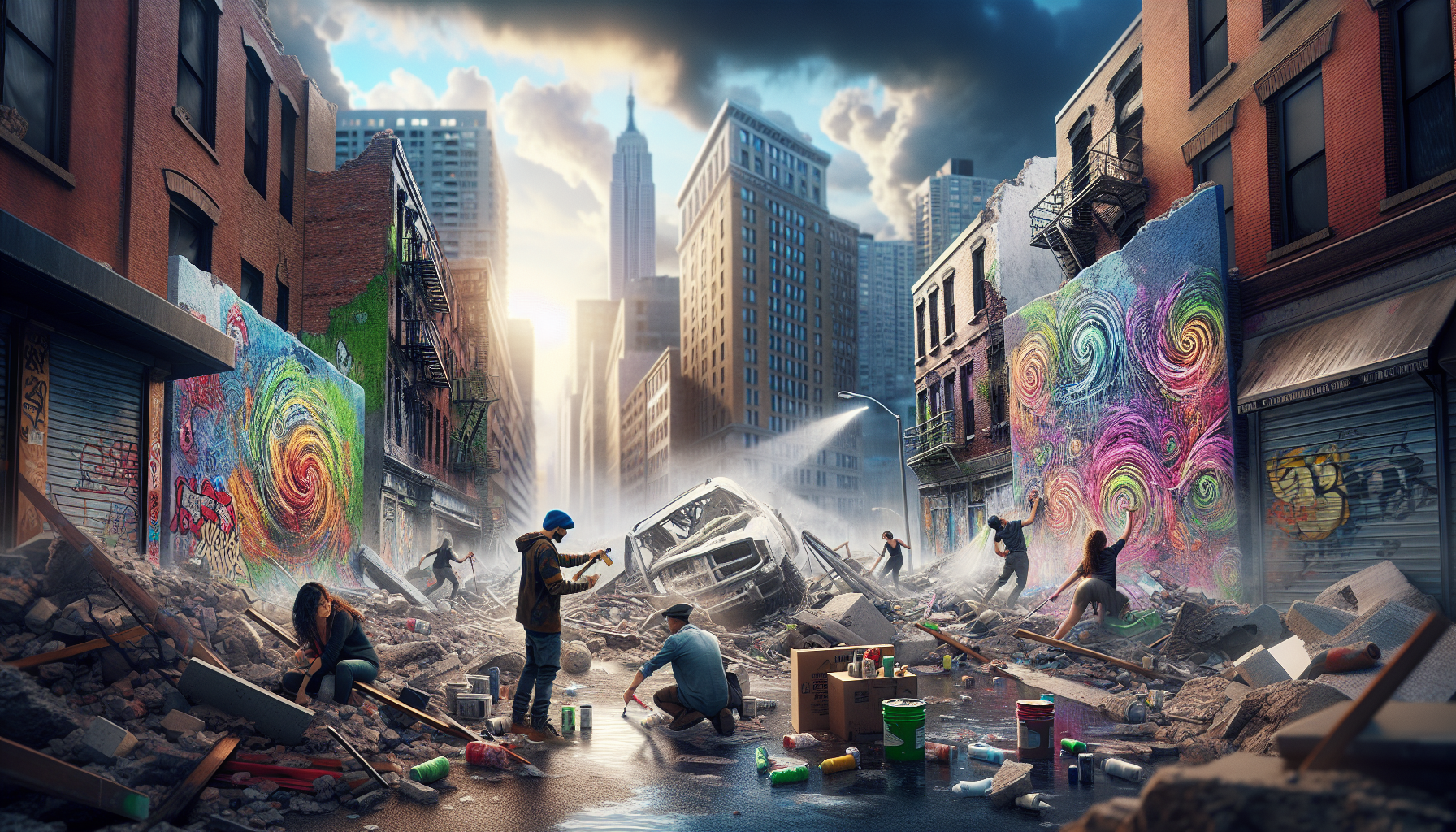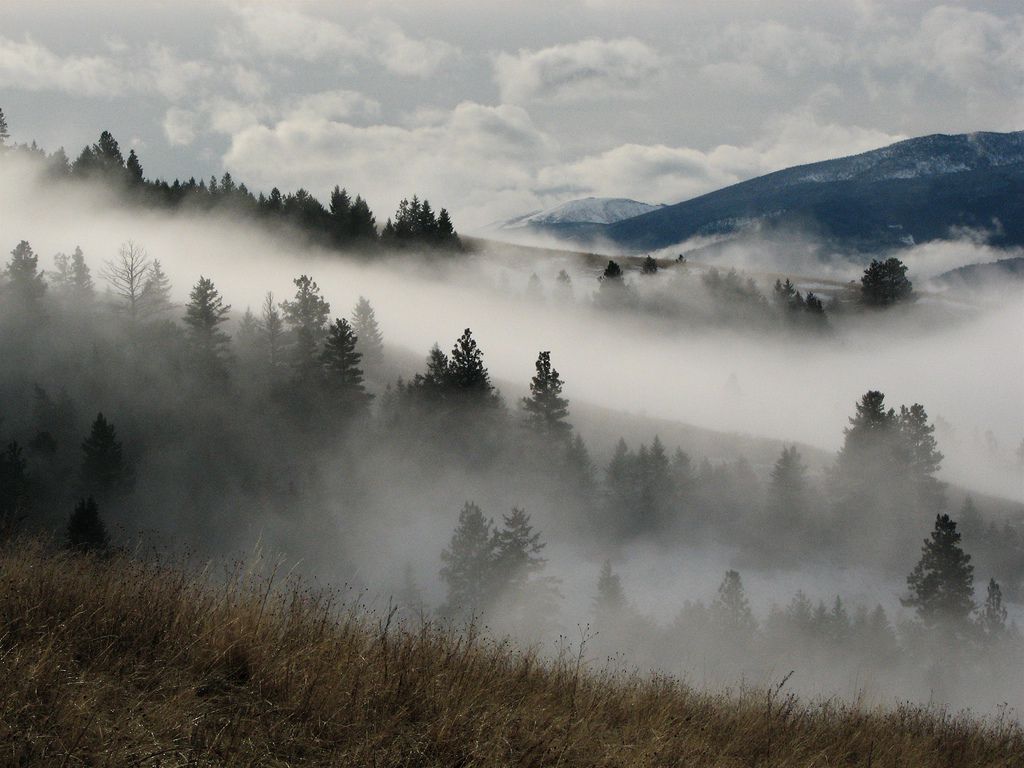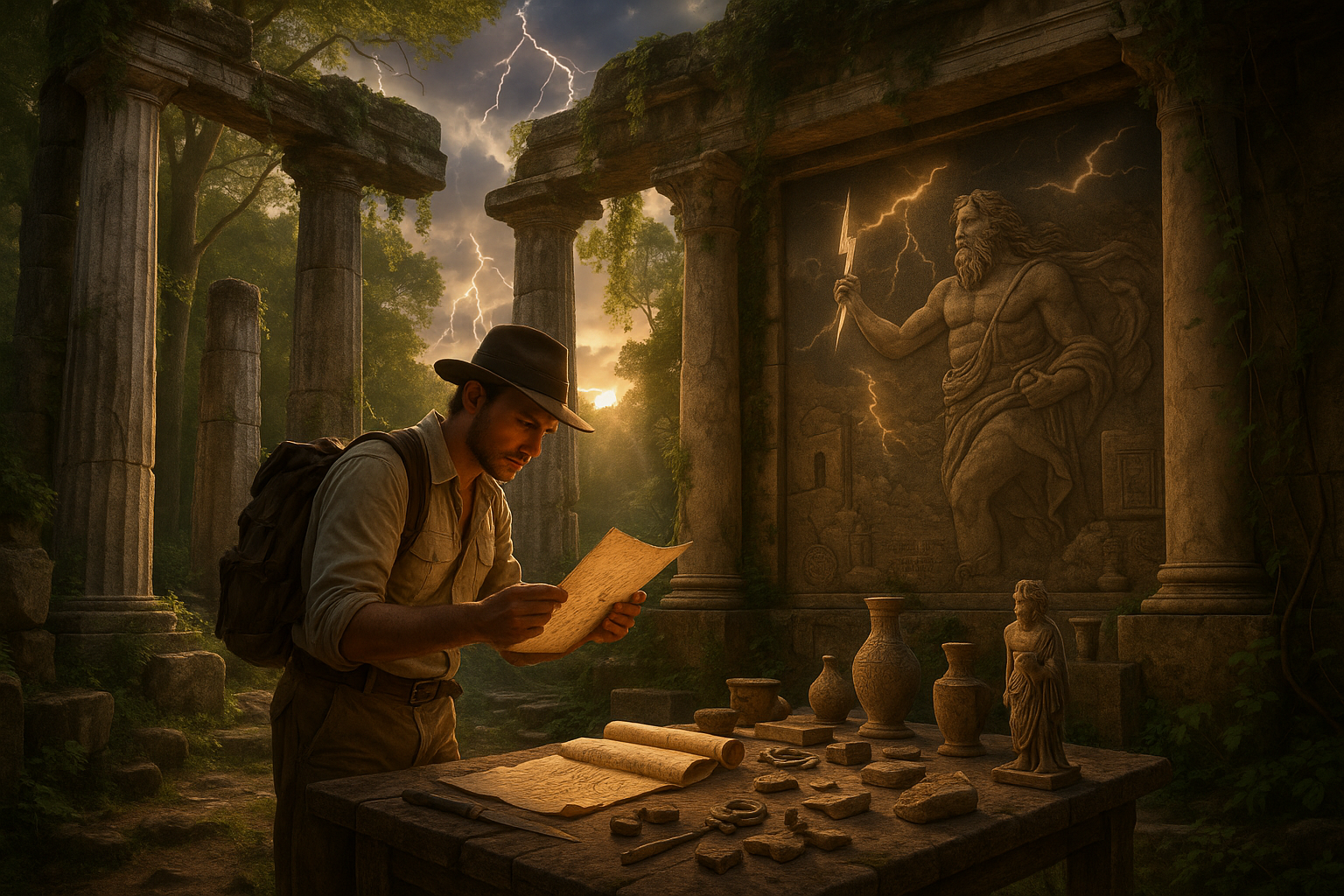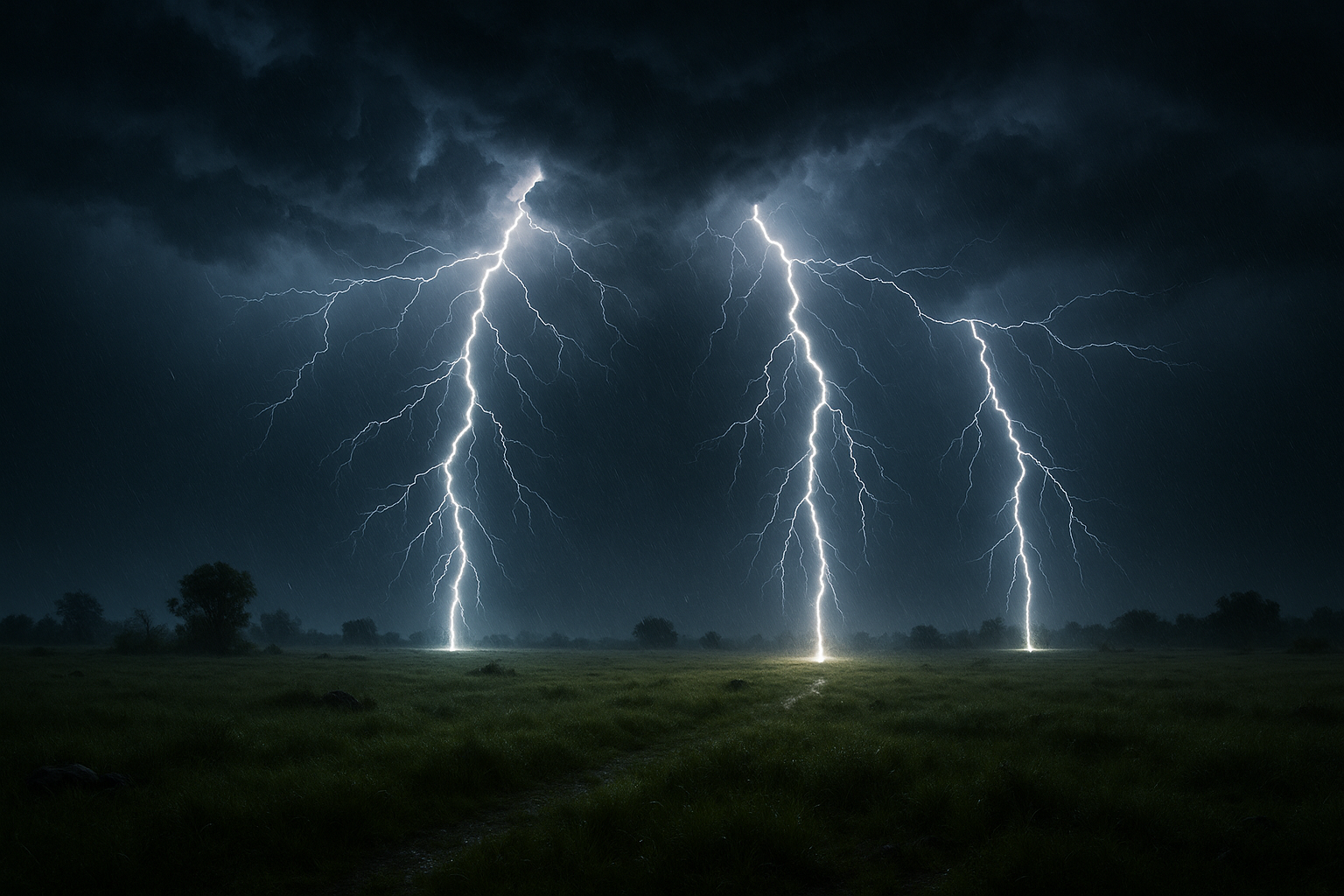In the aftermath of a storm, the urban landscape often resembles a canvas of chaos, with debris scattered like abandoned brush strokes, streets washed with the melancholy hues of disruption, and structures left in varying states of vulnerability. Yet, amid this turmoil, a remarkable phenomenon is emerging, one that transforms the very essence of destruction into an explosion of creativity: storm aftermath street art. This unique form of artistic expression not only revitalizes public spaces but also sparks dialogue and community engagement, as artists and locals alike come together to reinterpret the remnants of chaos into vibrant masterpieces. 🌆
Storm aftermath street art is more than just a visual treat; it is a narrative woven into the fabric of the city. Each piece tells a story, capturing the resilience and spirit of a community that refuses to be defeated by nature’s fury. From murals depicting mythical creatures rising from the floods to abstract installations using salvaged materials, these artworks invite onlookers to pause and reflect on the dual nature of destruction and creation. As you walk through streets adorned with these powerful images, you can almost feel the pulse of the city, resilient and defiant, echoing through every brushstroke and color splash. 🎨
This article will delve deep into the world of storm aftermath street art, exploring its origins, the artists behind the movement, and its impact on urban landscapes. We’ll journey through cities that have embraced this unconventional art form, examining how it fosters a sense of community and offers a new lens through which to view the scars of past storms. Additionally, we’ll discuss the challenges and controversies surrounding this burgeoning art scene, and how it continues to evolve as both a form of expression and a tool for social change. Join us as we uncover the transformative power of creativity in the wake of chaos, revealing how art not only survives but thrives in the face of adversity.
The Emergence of Street Art as a Form of Expression
Street art has a long history as a form of artistic expression, often emerging in times of social or political unrest. Its roots can be traced back to ancient civilizations where graffiti was used as a medium for public discourse. However, in the modern context, street art became prominent in the late 20th century, largely driven by the counterculture movements in cities like New York and Paris. Street art has since evolved beyond its rebellious beginnings to become a significant cultural and aesthetic force in urban landscapes worldwide.
What makes street art particularly compelling is its ability to transform mundane spaces into vibrant canvases that reflect the collective sentiments of a community. Unlike traditional art forms that are often confined to galleries and museums, street art is accessible to a broader audience, challenging perceptions and sparking dialogues among passersby. This public accessibility makes street art a powerful tool for artists to convey messages of social justice, environmental consciousness, and cultural identity.
The Role of Street Art in Post-Storm Urban Recovery
Natural disasters, such as storms, often leave a trail of destruction in their wake, causing significant damage to infrastructure and communities. In the aftermath, the visual landscape of affected areas is dominated by scenes of chaos and destruction. However, this environment also presents an opportunity for transformation. Street artists often seize this moment to create works that reflect both the resilience of the community and the hope for recovery.
Storm aftermath street art can serve as a cathartic release for communities dealing with the trauma of a natural disaster. By transforming damaged walls and abandoned structures into works of art, artists can provide a sense of hope and renewal. This form of art can also serve as a historical record of the event, capturing the emotions and experiences of those who lived through it. Through their work, street artists can inspire collective healing and solidarity, turning chaos into a canvas for creativity.
The Impact of Storm Aftermath Street Art on Urban Aesthetics
Street art created in the aftermath of storms can have a profound impact on the aesthetic and cultural identity of urban spaces. By incorporating elements of the surrounding environment, such as debris and structural damage, artists can create works that are deeply rooted in the context of the disaster. This contextual relevance adds a layer of meaning to the art, resonating with both local residents and visitors.
Moreover, storm aftermath street art can challenge traditional notions of beauty and art. By embracing imperfection and the ephemeral nature of their medium, street artists encourage viewers to reconsider what constitutes art and beauty. This can lead to a broader appreciation for diverse forms of expression and foster a more inclusive cultural landscape. In many cases, the presence of street art in urban environments can lead to increased interest in local culture and history, driving cultural tourism and community engagement.
To understand the impact of street art on urban aesthetics, consider the following table comparing traditional urban spaces with those enhanced by street art:
| Aspect | Traditional Urban Space | Urban Space with Street Art |
|---|---|---|
| Aesthetic Appeal | Often uniform and functional | Vibrant and dynamic, incorporating diverse artistic styles |
| Community Engagement | Limited opportunities for interaction | Increased interaction and dialogue among residents |
| Cultural Identity | Reflects dominant cultural norms | Showcases diverse cultural expressions and local narratives |
As you can see from the table, street art significantly enhances the aesthetic and cultural vibrancy of urban spaces. If you are interested in seeing how street art has transformed specific areas, I recommend checking out the video linked below. It provides an in-depth look at how artists are using their skills to revitalize urban landscapes in the wake of natural disasters.
Transforming Urban Landscapes: The Power of Street Art – [Channel Name]
Community Involvement in Street Art Projects
One of the most remarkable aspects of street art is its ability to engage communities in meaningful ways. In the context of storm recovery, community involvement in street art projects can be incredibly empowering. Local residents often participate in the creation of murals and installations, offering their perspectives and contributing to the artistic process. This collaborative approach not only strengthens community bonds but also ensures that the art reflects the diverse voices and experiences of those who call the area home.
Community-driven street art projects can also serve as platforms for education and awareness. By involving local schools, community centers, and organizations, artists can engage younger generations in discussions about environmental sustainability, resilience, and cultural heritage. These projects can inspire future artists and leaders to continue advocating for positive change within their communities. Moreover, by highlighting local talent, street art projects can help to nurture a vibrant local art scene, providing opportunities for emerging artists to showcase their work.
The Global Influence of Storm Aftermath Street Art
While storm aftermath street art is often deeply rooted in the local context, its impact can extend far beyond the borders of the affected community. The global reach of social media platforms allows street art to be shared and appreciated by audiences worldwide. This exposure can help to raise awareness about the challenges faced by communities affected by natural disasters and inspire action and solidarity on a global scale.
Street artists who gain international recognition often use their platform to advocate for broader social and environmental issues. By drawing attention to the impacts of climate change, artists can contribute to the global conversation about sustainability and resilience. This artistic activism can inspire individuals and communities to take meaningful action in their own lives, driving collective efforts to address the root causes of climate change and build a more sustainable future.
Furthermore, the global influence of street art can lead to cross-cultural exchanges and collaborations. Artists from different parts of the world may come together to work on projects that address common challenges, fostering a sense of global community and shared responsibility. These collaborations can result in innovative and powerful works of art that resonate with diverse audiences and inspire positive change.
Street Art as a Catalyst for Urban Transformation
In recent years, many cities have recognized the transformative potential of street art and have embraced it as a key component of urban development strategies. By integrating street art into urban planning, cities can enhance their cultural landscape, attract tourists, and stimulate economic growth. Street art can also serve as a tool for placemaking, helping to create unique and vibrant neighborhoods that reflect the identity and character of their residents.
To illustrate the impact of street art on urban transformation, consider the following benefits:
- Increased tourism and cultural interest in urban areas
- Revitalization of neglected or underutilized spaces
- Enhanced community engagement and social cohesion
- Promotion of local culture and artistic talent
- Increased property values and economic development
As you explore the world of storm aftermath street art, consider the broader implications of this powerful form of expression. By supporting street art initiatives and engaging with the artists and communities behind them, you can contribute to the ongoing transformation of urban landscapes and help to build a more resilient and creative future.

Conclusion
Transforming Chaos into Creativity: The Impact of Storm Aftermath Street Art on Urban Landscapes
In navigating the aftermath of chaos, there emerges a unique opportunity for transformation and creativity, particularly through the medium of street art. The exploration of this theme, as discussed throughout our article, unveils a fascinating intersection where destruction meets artistry, turning urban landscapes into canvases of resilience and innovation. Let’s recap the main points explored and emphasize the significance of this transformative phenomenon.
Firstly, we delved into the role of natural disasters in reshaping urban environments. Storms, while devastating, strip away the familiar and expose the raw, underlying structures of our cities. This bare landscape, marked by debris and damage, is a powerful reminder of nature’s force. Yet, it also offers a blank slate, ripe for creative expression. Street artists, in particular, seize this moment to transform the chaotic remnants into vibrant expressions of hope and rebirth. This process not only beautifies the urban environment but also serves as a testament to human resilience and adaptability.
We then explored the psychological impact of this transformation. Art in public spaces, especially in the wake of a storm, offers a form of collective healing. It fosters a sense of community as people come together to witness and participate in the artistic process. These artworks often reflect themes of recovery and unity, instilling hope and encouraging a shared vision for the future. Street art becomes more than just decoration; it is a catalyst for emotional and social recovery, bridging the gap between chaos and peace.
The article further highlighted case studies of cities that have successfully embraced this artistic renaissance. New Orleans, for example, post-Hurricane Katrina, witnessed a surge in street art that communicated powerful messages of resilience and cultural pride. Similarly, cities in the Caribbean, often hit by hurricanes, have seen local artists reclaiming public spaces, turning scars into symbols of strength and community spirit. These examples underscore the universal language of art and its ability to transcend cultural and geographic boundaries.
Moreover, we discussed the environmental implications of this artistic transformation. By utilizing debris and salvaged materials in their work, street artists contribute to sustainability efforts. This innovative approach not only reduces waste but also emphasizes the theme of regeneration, aligning with the broader ecological narrative of renewal after destruction. Street art, in this context, becomes a form of activism, promoting environmental awareness and inspiring sustainable practices.
The economic aspect was also considered. Revitalized urban spaces attract tourism and boost local economies. Street art tours have become popular attractions, drawing visitors eager to experience the unique fusion of art and urban recovery. This influx of tourism can aid in funding further reconstruction efforts, creating a positive feedback loop where art fuels economic growth, which in turn supports more artistic endeavors.
In conclusion, the impact of storm aftermath street art on urban landscapes is profound and multifaceted. It transforms chaos into a canvas, reflecting resilience, community, and environmental consciousness. As we have seen, these artworks are not merely decorative but serve as vital instruments of healing, economic revitalization, and cultural expression.
The importance of embracing this transformative potential cannot be overstated. In a world increasingly affected by climate change and natural disasters, the ability to adapt and find beauty in destruction is crucial. Street art stands as a beacon of hope, encouraging us to view challenges as opportunities for creative growth and unity.
We invite you, our readers, to engage with this topic actively. Consider how art impacts your community and the ways in which it can be harnessed for positive change. Share your thoughts and experiences, and inspire others by spreading this message. Perhaps you will be inspired to support local artists or participate in community art projects. 🌍
To further explore this fascinating subject, you can visit active resources and studies that delve deeper into the intersection of art and urban transformation. Keep the conversation alive and be a part of the movement that celebrates resilience and creativity in the face of adversity.
Thank you for joining us on this journey of exploration and discovery. Let the transformative power of art guide us toward a more harmonious and resilient future.
Toni Santos is a visual storyteller and artisan whose creations celebrate the poetry of the natural world. Through his thoughtful artistic lens, Toni captures the elegance of botanical forms, transforming them into meaningful expressions of symbolism, resilience, and timeless beauty.
His journey is deeply rooted in a passion for flora and the mysteries they carry. From the shape of a petal to the curve of a vine, each design Toni brings to life reflects a deeper narrative — one of growth, transformation, and harmony with nature. Whether crafting symbolic floral jewelry, enchanted botanical illustrations, or seasonal visual studies, Toni’s work evokes the quiet magic found in Earth’s most delicate details.
With a background in handcrafted artistry and visual design, Toni blends technique with intention. His creations do more than decorate — they speak, often inspired by ancient meanings behind flowers, the cycles of the seasons, and the invisible bonds between nature and spirit.
As the creative voice behind Vizovex, Toni shares this botanical journey with the world, offering curated stories, handcrafted collections, and thoughtful articles that help others reconnect with nature’s symbolism and artistic essence.
His work is a tribute to:
The quiet power of flowers and their messages
The art of visual symbolism in everyday life
The beauty of slowing down to see what’s hidden in plain sight
Whether you’re an artist, a nature lover, or someone drawn to the deeper meanings behind the natural world, Toni welcomes you to explore a space where aesthetics meet soul — one petal, one story, one creation at a time.





